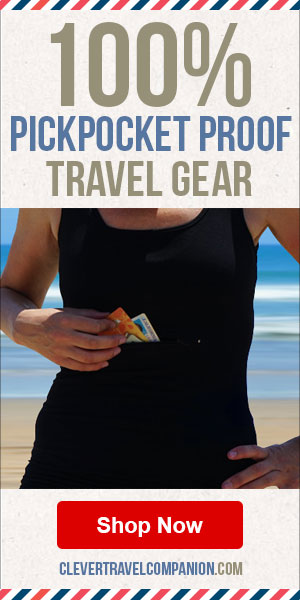Last Updated on November 18, 2011 by Christine Kaaloa
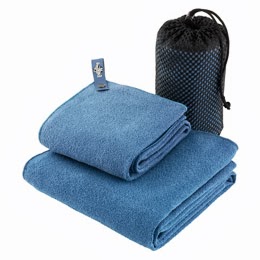
So you’re on the road and your luggage is loaded with spanking new travel gear. Now is the time to see if what you bought really works!
One of the items I least care to pack is a towel.
If I were only staying only at hotels, this may not be a concern. But if I’m backpacking and I’m staying at budget accommodations like hostels and guesthouses, then a towel is a necessity. Or is it? Should you get a travel towel or not? What kind of travel towel would work best?
Table of Contents: Packing Tips: Should you pack a travel towel?
Should you pack a travel towel?
Here’s four ways I revised my towel on the road:
#1. Micro-fiber travel towel
My first towel was an Eagle Creek Microfiber Travel Towel. I bought it in 2008.
Quick-drying, durable and antibacterial. These are three reasons that travelers, like myself, buy one of these babies. At 29×55 inches, it’s been long enough to act as a blanket or a beach towel. Although, it’s hardly ideal. Any “towel” will add bulk to your pack and microfiber towels are thick and hard to hand-wash. Not to mention, the chamois-feel may have your body feeling like a car! Nevertheless, it’s a solid towel and recommended as a decent “travel towel”. Store Cost: $24 (depending on size); Amazon (click on link above) offers it for around $11.
Pros:
• Quick drying, durable for rugged conditions and antibacterial.
• Multi-use: use it as a blanket, beach towel and bath
Con:
• Thinner than a towel, but still thick and bulky to pack.
• Hard to hand wash.
• After a few years, it stops being antibacterial.
• The only time you’ll want to use it is when you travel.
• You get to feeling like an automobile, because you feel like you’re wiping yourself with a chamois.
#2. A microfiber travel towel (but reduced size).
After down-sizing my guidebook, my scissors-yielding should come as no surprise. Any additional weight and bulkiness eventually nags on me when I’m traveling. I chopped my towel down from its 29 x 55 ” size to a 22 x 40″ one.
Did the bulk change? Minutely, and my body still felt like a car!
Pro:
• Smaller size and same benefits
Con:
• Same cons
#3. The Pashmina Shawl
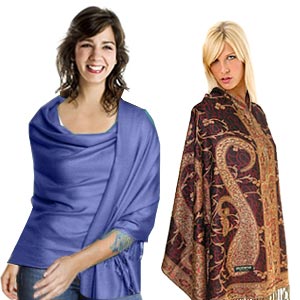
Pashminas make the best backup towels and are my personal favorites!
In India, I picked up pashmina scarf in Kerala for $5. No crazy designs, just a neutral, all-purpose blue-grey. Between shielding myself in India’s dust-polluted traffic, visiting its Sikh and Muslim temples, where I was required to cover my hair and using it to cover my shoulders in conservative countries, it was a wise investment. There’s always a handful of uses for pashminas and they’re fashionable, long and light-weight.
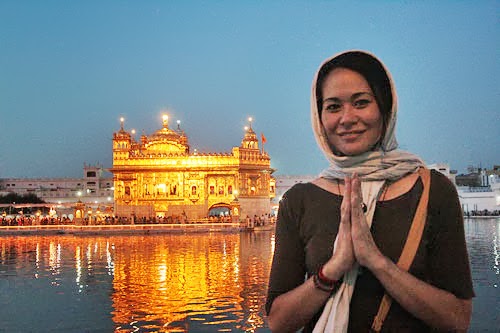
As towels, they’re easy to hand-wash and can dry in under 3 hours (especially on a hot day). When I got to Malaysia, I ditched my microfiber towel for my Indian pashmina. Store Cost: $11 and up; but in Asia or the streets of New York City, you can get them for $5 and under.
Pros:
• Fashion accessory with multiple uses.
• Especially useful in countries, where it’s hot but you can’t show shoulders (just throw it over your tank top or t-shirt)
• Face protection on hot, dusty or traffic polluted roads
• Useful for temples, where you need to cover up hair or legs.
• Warm & snuggly blanket wrap for cold places
• A perfect towel.
• Quick drying.
Con:
• If used as a towel, I’d have to wash it, before using it as a scarf. But as I said, it’s quick drying.
#4. The Sarong
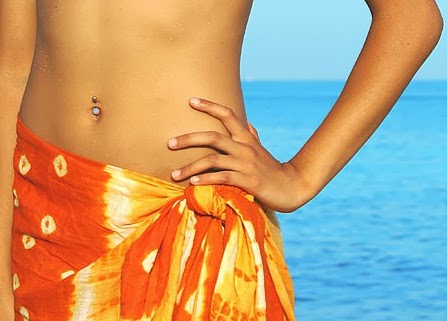
Everyone in Bali wears a sarong! As part of Balinese customs and traditions, you’re not allowed to enter temples with bare legs. So I bought a sarong and kept it in my bag. Personally, I’d always wanted one for beachy occasions and for Southeast Asian heat, it was a perfect backup skirt!
I’d loved my pashmina, but the sarong was even thinner and lighter in fabric. So, in Cambodia, I traded in my pashmina for the sarong. I gave my shawl to one of the hotel workers in my hotel; she was more than happy to receive it. Cost: approximately $10 and up; or $5 and under in Southeast Asia
Pros:
• Similar to a pashmina and works great as a towel.
• Can be lighter than a pashmina.
• Fabric can be thinner, thus dries a bit quicker.
Cons:
• Designs can be a little crazy.
• Not practical as a fashion accessory that can be worn at any occasion.












